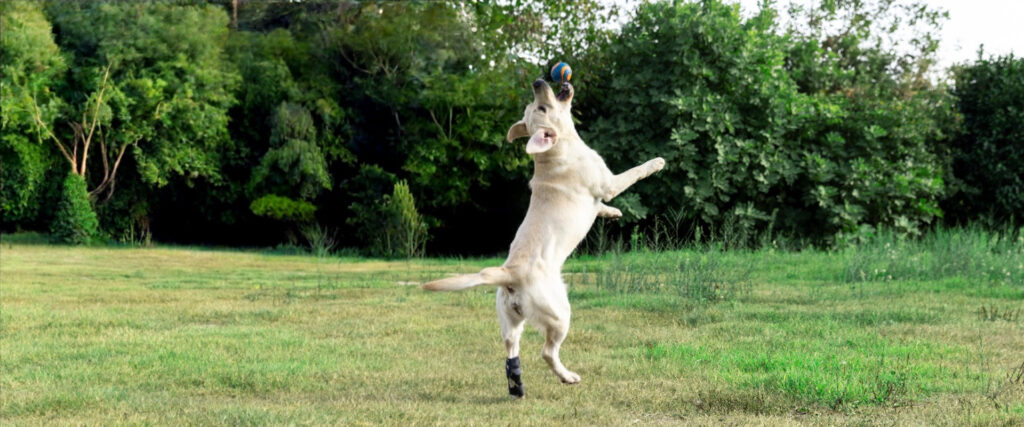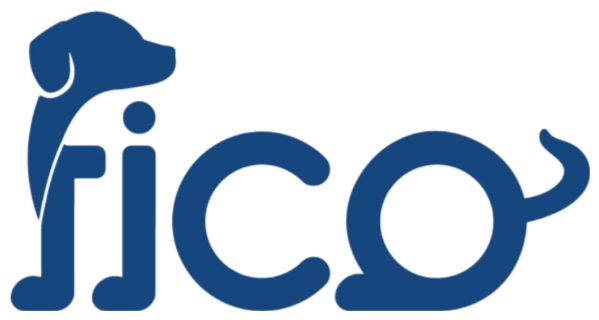How Hock Braces Enhance Mobility in Dogs with Joint Pain and Sprains

If your furry friend is struggling with mobility due to joint pain, sprains, or injuries, a hock brace might be just what they need. This simple yet powerful device offers targeted dog mobility support, especially for dogs dealing with conditions like Achilles tendon ruptures, hock hyperextension, or arthritis. A hock brace stabilizes the rear leg, reduces pain, and promotes healing by limiting excessive movement. Whether your pup is recovering from surgery or dealing with chronic discomfort, the right brace can make a world of difference. Keep reading to explore how a hock brace can dramatically improve your dog’s mobility and quality of life.
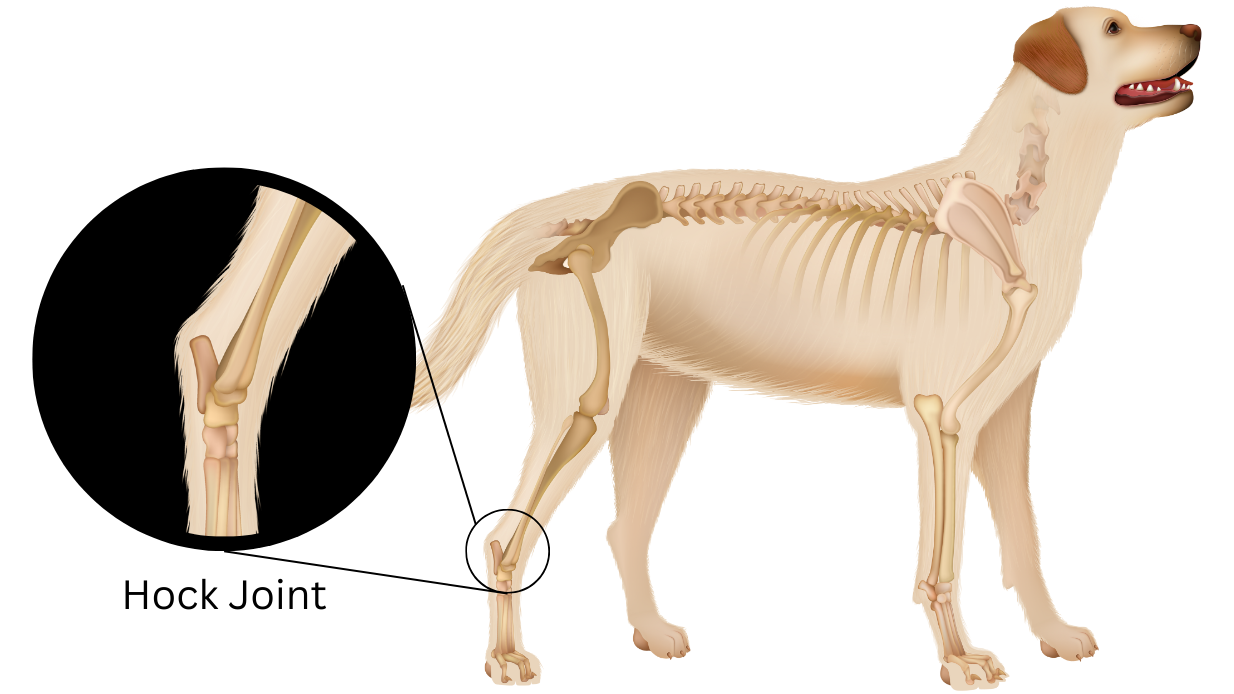
What Is a Hock Brace for Dogs?
A hock brace for dogs is a specially designed orthopedic support device that wraps around the lower part of a dog’s rear leg, specifically the hock joint, which is equivalent to the human ankle. This area, often referred to as the “dog ankle,” plays a vital role in their balance, agility, and overall movement. When a dog suffers from an injury, arthritis, sprain, or instability in this region, mobility becomes painful and difficult. That’s where a hock brace steps in.
Made from durable, flexible materials like neoprene or supportive plastic, these braces provide dog ankle support by stabilizing the joint, reducing strain, and preventing further damage. They work by limiting excessive motion, supporting weakened tendons and ligaments, and helping reduce inflammation or discomfort. Hock braces are especially beneficial for dogs recovering from surgeries, suffering from degenerative joint issues, or facing age-related mobility decline.
More than just a supportive tool, a hock brace enhances the quality of life by allowing dogs to walk, run, and play with less pain. For pet parents dealing with a limping or hesitant pup, this small device can be a game-changer, offering both healing and hope through consistent support and stability.
Common Conditions That Benefit from Hock Braces
When it comes to managing dog joint pain, a hock brace can offer significant relief and support for several debilitating conditions. These braces are especially effective in promoting healing and improving mobility in dogs suffering from rear leg injuries or degenerative joint issues. Let’s explore a few of the most common conditions where a hock brace proves essential.
Achilles Tendon Rupture in Dogs
One of the more serious rear leg injuries in dogs is an Achilles tendon rupture. This condition involves the tearing or complete rupture of the tendon that connects the calf muscle to the hock. Symptoms often include lameness, an abnormal gait (often walking on the entire foot rather than the toes), swelling, and pain around the hock area. A hock brace plays a crucial role in recovery by immobilizing the joint, reducing strain on the tendon, and providing the structural support needed for healing. It can be used either as a standalone treatment for minor ruptures or as part of a post-surgical rehabilitation plan.
Hock Hyperextension
Another condition that greatly benefits from bracing is hock hyperextension. This occurs when the ligaments and soft tissues around the hock are overstretched, often due to trauma or age-related degeneration. Dogs with this issue may have an unstable gait, visible sagging in the joint, or difficulty bearing weight. A hock brace offers essential stabilization, prevents further joint collapse, and alleviates pain during movement.
Other Conditions Supported by Hock Braces
In addition to injuries, hock braces are incredibly useful in managing dog joint pain related to chronic conditions like arthritis. They also aid recovery following surgery, help manage degenerative myelopathy, and support dogs recovering from sprains or fractures. Whether your dog is healing from injury or battling age-related joint issues, a hock brace can provide the mobility support and comfort they need.
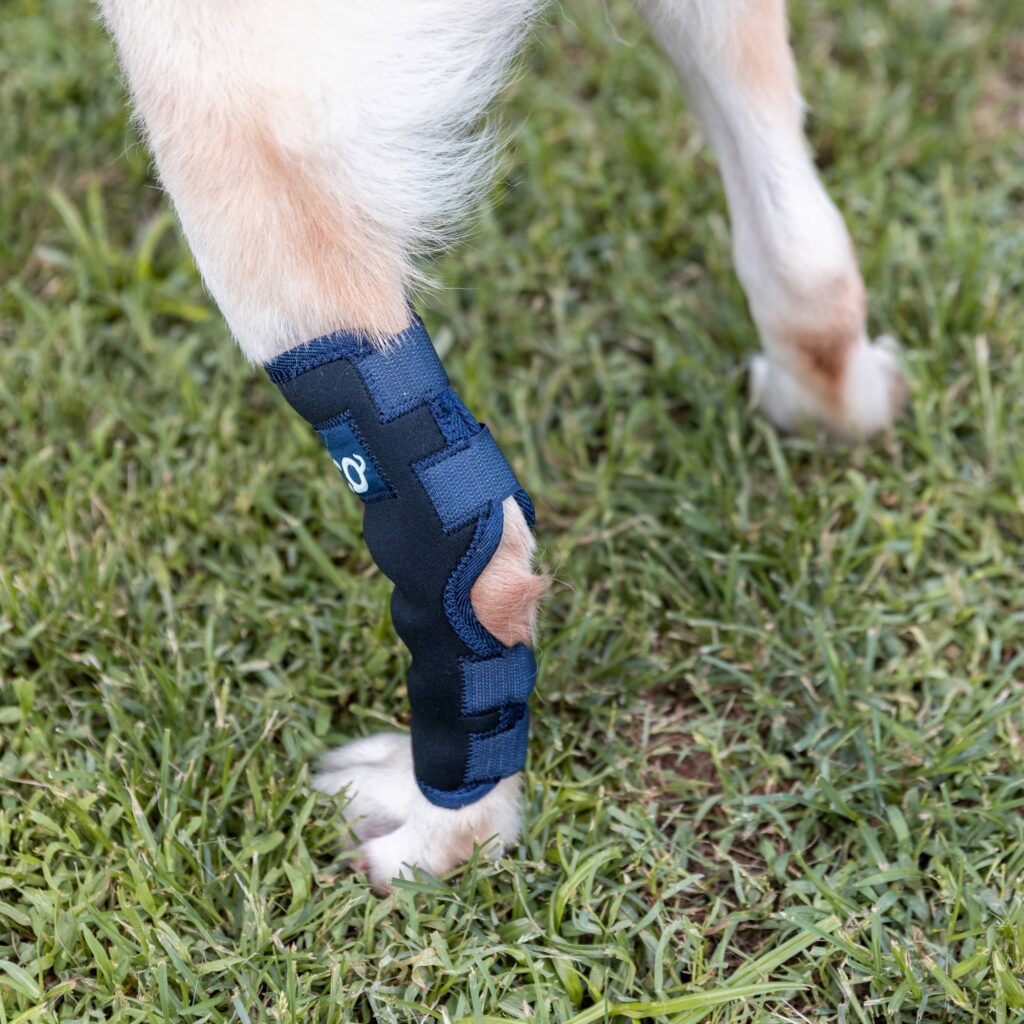
Key Benefits of Hock Braces for Dogs
When your dog is in pain or struggling to move comfortably, every step can feel like a mountain. That’s where the benefits of hock braces come into play. Whether your dog is recovering from an injury, dealing with a chronic condition, or simply getting older, a hock brace provides the kind of targeted support that can improve dog mobility and drastically enhance their daily quality of life. Let’s break down how this small but mighty tool can make a big difference.
Pain Relief and Joint Support
One of the most immediate benefits you’ll notice when your dog starts wearing a hock brace is pain relief. Dogs with joint issues often suffer from inflammation, stiffness, and discomfort, especially in the hock joint. A hock brace helps stabilize this joint, keeping it properly aligned and limiting unwanted motion that could worsen the pain.
By acting almost like a gentle compression wrap, the brace supports the tendons and ligaments surrounding the hock, reducing the pressure on inflamed areas. This not only alleviates existing pain but also prevents further irritation during movement. It’s similar to how we use knee or ankle braces when we’ve overexerted ourselves, your dog gets that same kind of soothing, stabilizing relief.
Dogs dealing with arthritis, ligament injuries, or age-related joint deterioration benefit immensely from the ongoing support of a hock brace. It’s like giving your dog a reliable crutch that allows them to stay active without compromising their comfort.
Enhanced Mobility
Mobility is freedom for dogs. They want to run, chase, explore, and play. When that movement becomes limited due to joint issues, it doesn’t just hurt them physically, it affects their mood and confidence too. Hock braces help restore that freedom.
By stabilizing the hock joint, the brace helps dogs move more efficiently and comfortably. It minimizes strain with each step and promotes a more balanced gait. The result? Your dog is more willing to go on walks, climb stairs, or jump onto their favorite spot on the couch.
For senior dogs or those recovering from an injury, the added support makes every movement safer and more manageable. It doesn’t just improve dog mobility, it renews their zest for life. You’ll often see dogs regain energy and enthusiasm once they’re no longer burdened by pain or instability.
Injury Prevention
If your dog has suffered a leg injury before, the last thing you want is a repeat. And if they haven’t, prevention is still key. One of the major benefits of hock braces is that they serve as a protective shield against reinjury.
The brace limits hyperextension, overuse, and awkward movements that often lead to further strain or tears. It’s especially valuable for active dogs who love to run or for those who are a little too brave for their own good. Even in day-to-day activities, like playing fetch or jumping into the car, that added layer of protection can mean the difference between a safe landing and a painful sprain.
For dogs healing from soft tissue injuries, sprains, or surgeries, wearing a brace ensures they don’t accidentally undo their progress by pushing their bodies too hard too soon.
Post-Surgical Recovery
Surgery is often necessary to repair serious joint injuries or conditions like an Achilles tendon rupture, but the recovery process is just as crucial as the operation itself. A hock brace provides much-needed support during this healing phase.
Post-surgery, the joint is often weak and vulnerable. The brace helps keep it aligned and protected, allowing your dog to gradually regain strength without putting too much pressure on the recovering tissues. It can also reduce swelling and improve blood flow, both of which are essential for healing.
In addition to physical support, hock braces give peace of mind. Instead of constantly worrying that your dog might re-injure themselves, you can rest easier knowing they have that extra layer of defense. And because it promotes a safer, more efficient recovery, your dog is more likely to bounce back faster and stronger.
The benefits of hock braces extend far beyond just wearing a device, they transform your dog’s experience with pain, movement, and healing. By providing support where it’s most needed, a hock brace helps improve dog mobility, ease discomfort, prevent reinjury, and speed up recovery. It’s a small investment with life-changing rewards for both you and your canine companion.
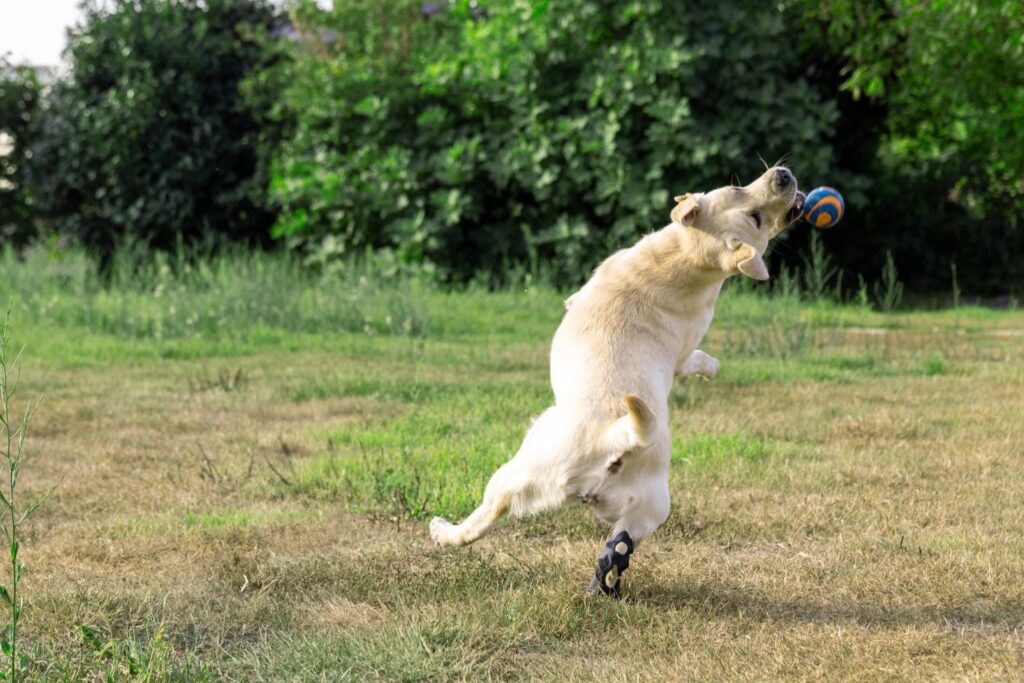
When Are Hock Braces Recommended?
Understanding when to use a hock brace can make a significant difference in your dog’s comfort, healing, and overall mobility. These braces aren’t just for injured dogs, they’re often a proactive solution recommended by veterinarians to prevent further damage, manage chronic conditions, or support post-surgical recovery.
Vet-Recommended Dog Braces: When and Why
Veterinarians commonly suggest vet-recommended dog braces like hock braces in several situations. If your dog has experienced an injury such as a sprain, strain, or a rupture of the Achilles tendon, a brace may be prescribed to provide targeted support and reduce the risk of re-injury. Similarly, dogs suffering from degenerative conditions like arthritis or hock joint instability may benefit from consistent brace use to ease discomfort and enhance daily function.
Another common recommendation comes post-surgery. After procedures involving the rear leg or hock area, a brace is often used as a tool to stabilize the joint and allow tissues to heal properly without being stressed. It offers gentle compression and limits excessive movement, which speeds up the recovery process.
How to Know If Your Dog Needs One
So, how can you tell when to use a hock brace for your dog? Watch for signs like limping, swelling in the ankle area, stiffness after rest, or a noticeable change in their walking pattern. Dogs that suddenly become reluctant to climb stairs, jump into the car, or go on their regular walks might be dealing with joint pain or instability. These are clear signs that extra support could help.
You should also consider your dog’s age and activity level. Senior dogs or very active breeds are more prone to developing joint issues and may benefit from wearing a hock brace as a preventive measure.
Consulting Your Veterinarian
Always consult with your vet before starting your dog on any orthopedic support device. A vet can evaluate the severity of the condition and recommend the right type of brace, size, and how long it should be worn. They can also demonstrate proper fitting and offer guidance on integrating the brace into your dog’s daily routine. At the end of the day, vet-recommended dog braces aren’t just about treating existing conditions, they’re a smart step toward safeguarding your dog’s long-term mobility and well-being.
How to Use and Maintain a Hock Brace
Knowing how to use a hock brace correctly can make all the difference in how well it supports your dog. A poorly fitted or neglected brace won’t just be uncomfortable—it can cause more harm than good. Whether you’re new to using one or want to make sure you’re getting it right, this section walks you through fitting, maintenance, and proper monitoring.
Fitting the Brace: A Step-by-Step Guide
Proper fit is key to getting the full benefits of a hock brace. Here’s how to do it right:
- Measure Accurately: Use a soft measuring tape to measure around your dog’s hock joint, just above and below the ankle. Compare this with the sizing chart provided by the manufacturer.
- Positioning the Brace: Gently wrap the brace around the hock joint, making sure it sits comfortably over the area without twisting or bunching. The joint should be centered in the brace’s supportive structure.
- Adjusting the Straps: Secure the Velcro or buckle straps snugly, but not too tight. You should be able to slide one finger between the brace and your dog’s skin.
- Check for Comfort: Watch how your dog walks. They may take a few minutes/hours to adjust, but there should be no signs of limping or irritation.
Always follow the specific instructions that come with your brace, as designs can vary slightly.
Maintenance Tips: Keeping the Brace Clean and Effective
Good hock brace maintenance helps keep the device in top shape and comfortable for your dog. Here’s how to care for it:
- Cleaning: Most braces are made of neoprene or similar materials that are easy to clean. Hand wash the brace in cold water with mild soap every few days or whenever it gets dirty.
- Drying: Let the brace air dry completely before reapplying it. Never use a dryer or expose it to direct heat, as this can warp the material.
- Storage: When not in use, store the brace flat in a cool, dry place to maintain its shape and elasticity.
Monitoring Your Dog for Signs of Discomfort
Even if the brace seems to fit well, it’s important to keep an eye on your dog. Signs that the brace may be too tight or improperly fitted include:
- Limping or reluctance to walk
- Licking or chewing at the brace
- Visible redness, swelling, or sores
- Whining or restlessness after application
If you notice any of these symptoms, remove the brace immediately and reassess the fit. Consult your veterinarian if the problem persists.
By mastering how to use a hock brace and practicing regular hock brace maintenance, you’ll help your dog get the best support possible, extend the life of the device, and ensure a smooth road to recovery or improved mobility.
How Long Should a Dog Wear a Hock Brace Daily?
Dog hock brace usage depends on your pup’s condition and your veterinarian’s recommendation. Typically, dogs start by wearing the brace for a few hours a day to allow gradual acclimatization. Over time, this can increase to several hours, especially during active periods or walks. Monitoring is key, look for signs of improved movement, reduced limping, or better weight distribution. Avoid prolonged use at first to prevent irritation. The ideal wearing time for dog braces varies, but consistency and comfort are vital. Always follow your vet’s guidance for the safest and most effective results.
In summary, the hock brace benefits for dogs are undeniable, it offers essential support, eases joint pain, and enhances mobility, helping your furry friend regain their active lifestyle. Whether your dog is recovering from an injury or dealing with chronic conditions, a hock brace can be a powerful part of their dog mobility solutions. Always consult with your veterinarian to ensure the right fit and usage plan tailored to your pet’s needs. Ready to give your pup the relief they deserve?
Visit Fico’s website today to explore high-quality hock braces crafted for superior comfort, support, and long-term mobility.
